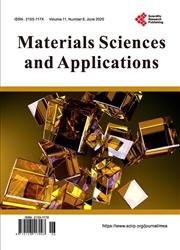Raman Spectroscopy Analysis of Wollastonite/Tricalcium Phosphate Glass-Ceramics after Implantation in Critical Bone Defect in Rats
引用次数: 2
Abstract
In this work wollastonite/tricalcium phosphate (W/TCP) glass-ceramics with three W/TCP weight ratios (20/80; 60/40 and 80/20) were implanted in rat calvaria and the modifications taking place during implantation were studied by Raman spectroscopy. The experimental glass-ceramics were composed of different contents of βW, αW, βTCP, αTCP, and glassy phases. Materials were implanted for 7-, 15-, 45- and 120-day periods after which the implanted materials were recovered and analyzed by FT-Raman spectroscopy. The results suggested that the αW phase reabsorbs fast during implantation in the glass-ceramics 60/40 and 80/20, whereas βTCP and αTCP glass-ceramic are gradually attenuated and replaced by biological apatite-like bands. In the glass-ceramic 20/80, the bands related to the βTCP phase remained unvaried in all analyzed periods. New bands associated with the deposition of colla-genous glass-ceramic 20/80 behaved just as an osteoconductive filling material, while glass-ceramics 60/40 and 80/20 were able to induce deposition of organic matrix mineralized new tissue. The 60/40 glass-ceramic showed the best performance and the most similar Raman spectrum to normal cortical bone.硅灰石/磷酸三钙微晶玻璃修复大鼠骨缺损的拉曼光谱分析
在本研究中,硅灰石/磷酸三钙(W/TCP)微晶玻璃具有三种W/TCP重量比(20/80;60/40和80/20)植入大鼠颅骨,用拉曼光谱研究植入过程中的修饰情况。实验微晶玻璃由不同含量的βW、αW、βTCP、αTCP和玻璃相组成。植入7天、15天、45天和120天后,对植入材料进行回收和ft -拉曼光谱分析。结果表明,αW相在60/40和80/20微晶玻璃中快速重吸收,而βTCP和αTCP微晶玻璃则逐渐衰减并被生物磷灰石样条带所取代。在20/80玻璃陶瓷中,与βTCP相相关的波段在所有分析周期内保持不变。胶原微晶玻璃-陶瓷20/80的新条带沉积表现为骨传导填充材料,而微晶玻璃-陶瓷60/40和80/20能够诱导有机基质矿化新组织的沉积。60/40玻璃陶瓷的性能最好,拉曼光谱与正常皮质骨最相似。
本文章由计算机程序翻译,如有差异,请以英文原文为准。
求助全文
约1分钟内获得全文
求助全文

 求助内容:
求助内容: 应助结果提醒方式:
应助结果提醒方式:


